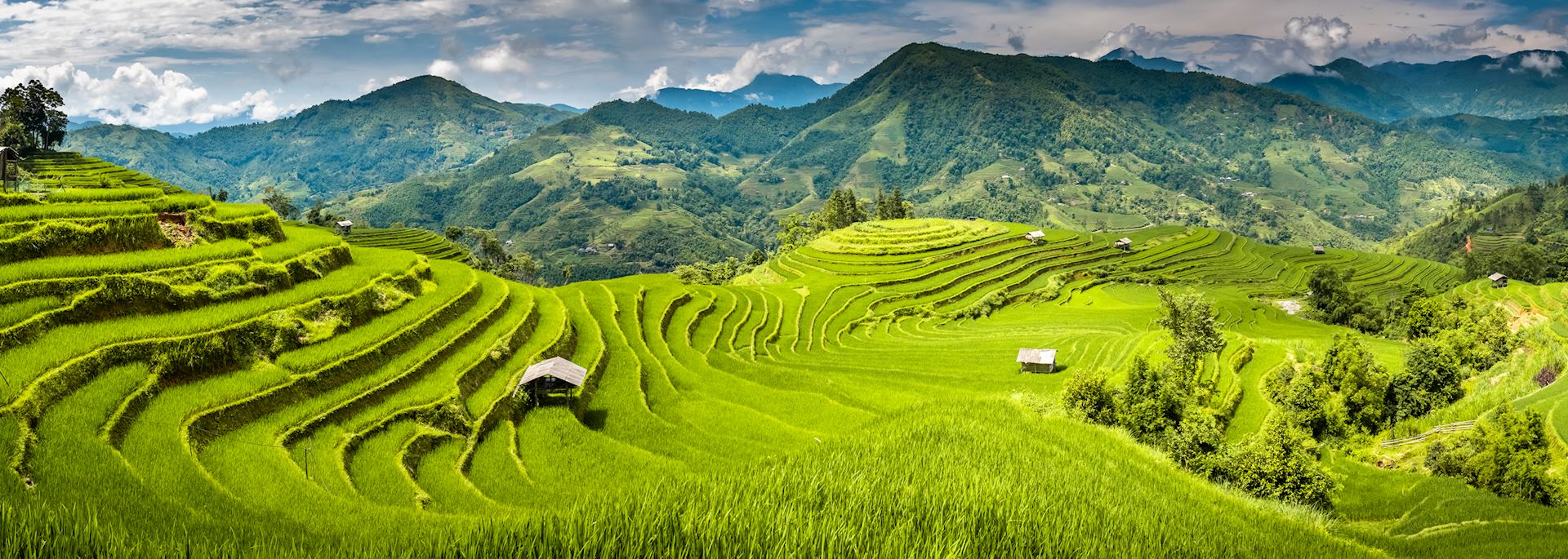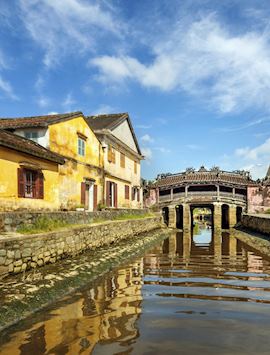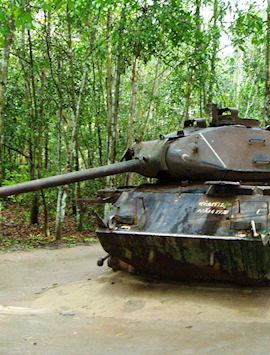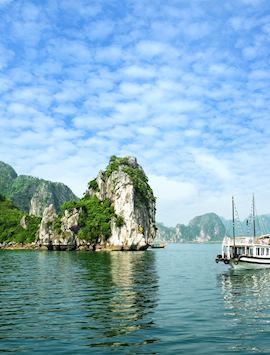By Southeast Asia specialist Matthew
Hanoi, Ho Chi Minh City, and Hue are the justifiable celebrities of many trips to Vietnam, but the country’s small touches are just as rewarding, like cycling beside the verdant banks of the Mekong Delta or trekking around the remote farming communities of Pu Luong, where life ticks to the cycle of the rice harvest.
And, with a bit of know-how, Hanoi, Ho Chi Minh City, and Hue can take on different perspectives: Hanoi’s art culture in the company of local curator, Ho Chi Minh City’s sundown sights explored by Vespa, and Hue’s culinary hotspots visited by rickshaw. Wherever your passions lie, there’s a myriad of intriguing things to do up and down the country, so here are my top six highlights for a trip to Vietnam.
1. A guided tour of Hanoi’s art scene
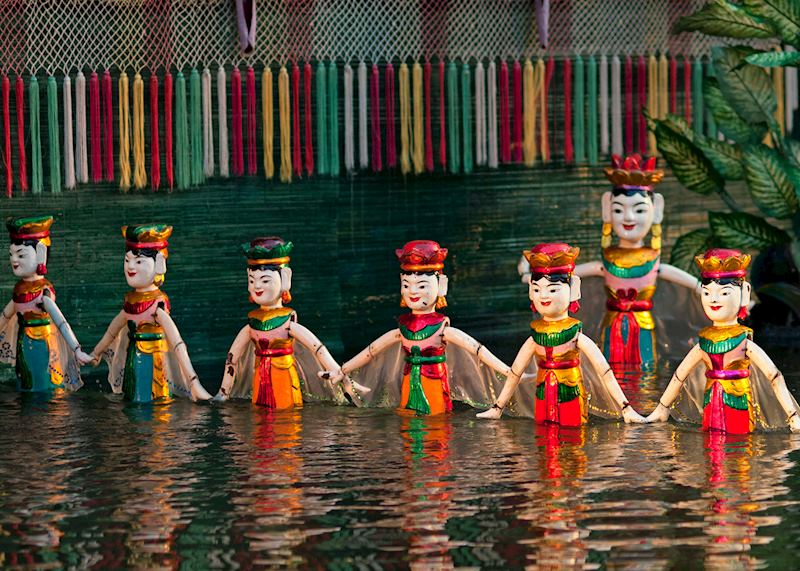
With over 250 art galleries dotting the streets and a burgeoning street-art scene, Hanoi is a hotspot for creativity. On a tour with an experienced guide, you can discover some of the city’s most interesting art spaces, some of which still fly under the radar.
Your introduction starts with a visit to the Vietnam National Fine Arts Museum, once the French Ministry of Information. Here, you’ll see displays of artwork from different eras in Vietnamese history, from prehistoric ornaments made of iron and brass to 21st-century abstract impressionist paintings.
Weaving through the alleyways of the Old Quarter, you’ll also meet an artisan specialising in Hang Trong (Vietnamese woodcut painting). They’ll help you create your very own print, before you stop off for coffee at a contemporary cafe and art space.
2. A cruise to Halong Bay’s quieter neighbour, Lan Ha Bay
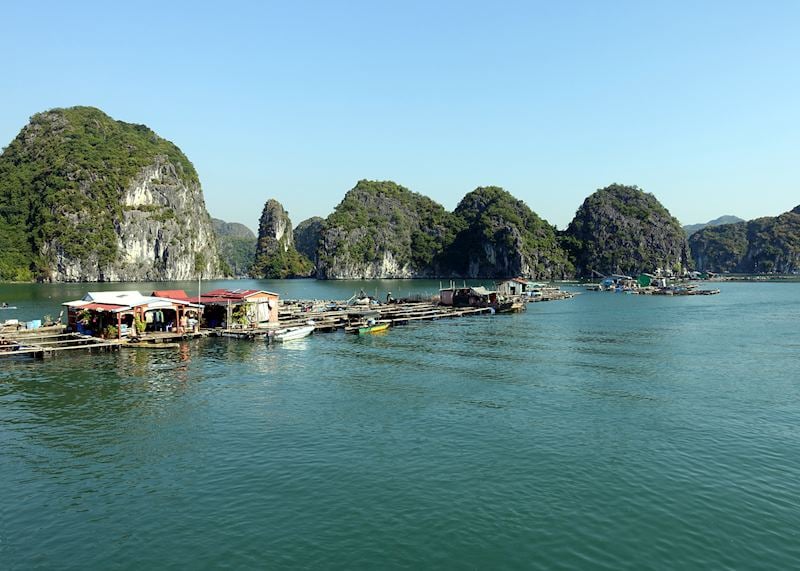
The lure of Halong Bay is its dramatic karst scenery — huge limestone islands jutting out of the water, which you can cruise around in a traditional junk. It’s no surprise that this UNESCO World Heritage Site is one of Vietnam’s most popular highlights, but this inevitably draws in the crowds. For a more tranquil alternative, with scenery that’s just as striking, I suggest a cruise to Lan Ha Bay instead.
Boarding your traditional Vietnamese junk at Halong City, you’ll voyage through an emerald seascape of islets, sea caves, and arches — an experience magnified by the relative quiet. You can also take to the water and navigate the islands by kayak to reach lesser-visited beaches and caves, or step foot ashore to explore one of the many island villages.
3. Private food tour of Ho Chi Minh City on the back of a Vespa
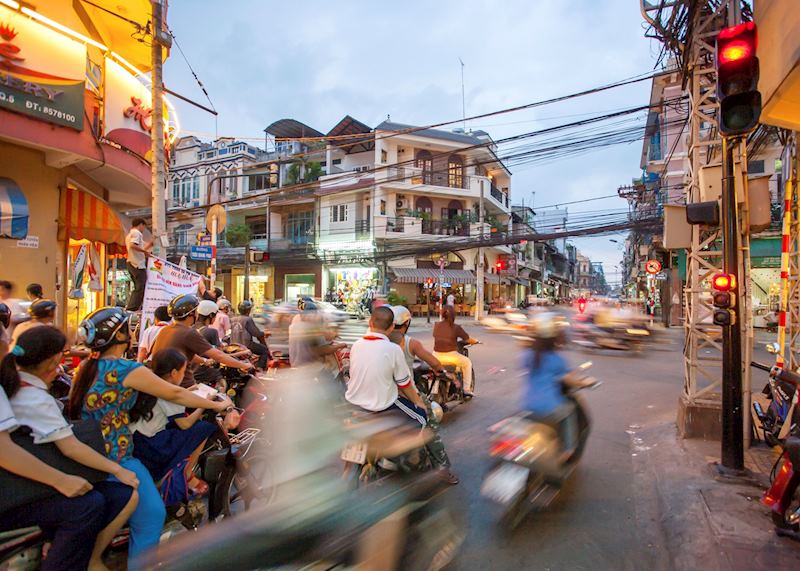
Dotted along the boulevards of Ho Chi Minh City (still often called Saigon) stand remnants of empire and revolution. Here you’ll find French esthetics woven into the fabric of its architecture and physical reminders of the events that surrounded the Vietnam War. There’s also a thriving culinary scene, influenced by the city’s multicultural past.
Zipping around the city on the back of a Vespa is one of my top-recommended things to do in Vietnam and one of the best ways to soak up Ho Chi Minh City’s sights, smells, and tastes. Just as night falls, your guide will expertly navigate the busy streets, weaving in and out of back alleys lined with eateries, cafes, and bars, where you can sample some of the city’s best dishes.
My guide took me to restaurants where I was the only international visitor, so the food was really authentic. I particularly enjoyed the banh mi, which had the perfect balance of crisp crust and chewy bread, as well as com tam (broken rice served with grilled pork) and goi cuon (fresh spring rolls dipped in a silky peanut sauce). We then wrapped up the tour with cocktails in a hidden speakeasy bar I would have never found by myself.
4. Treks through Pu Luong Nature Reserve
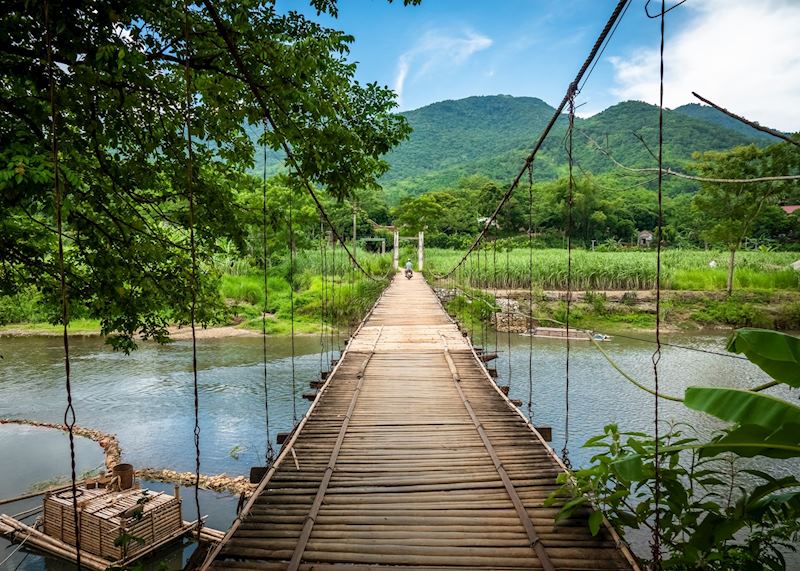
Mai Chau Valley’s patchwork of rice paddies, dotted by tiny villages, is a big draw for those wanting to experience rural Vietnamese life. If you’re planning to go, then I’d suggest allowing a day or two to visit Pu Luong where you can take a guided hike through the reserve.
With experienced guides for company, you’ll pass by crisply hewn rice paddies, bamboo water wheels, and stilted villages, learning about the Tai Dam people who live there. You can also hike up to a mountain pass for a birds-eye view of the sweeping emerald landscape below.
5. A visit to the hillside markets of Northern Vietnam
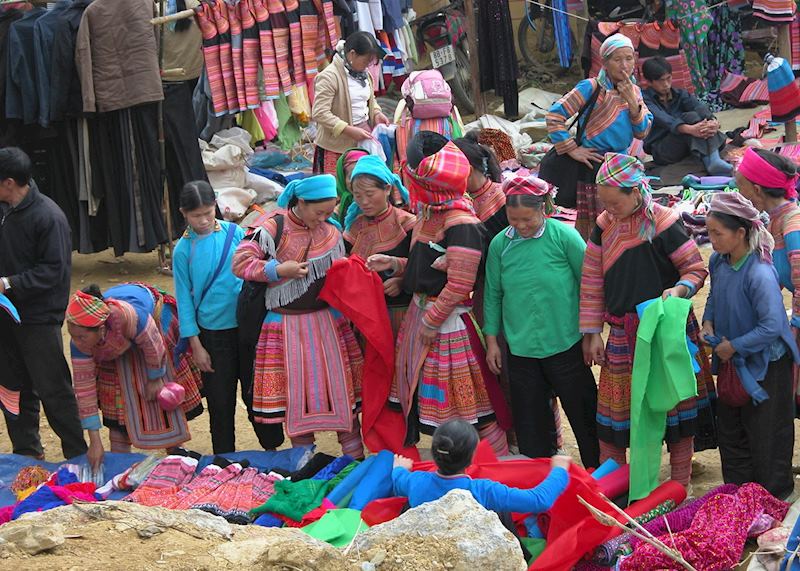
Lively markets take place in and around the northern hill town of Sapa. While most visitors restrict themselves to visiting the markets close to Sapa, I’d suggest journeying further afield — up to an hour and a half — for a more authentic experience. Here, you’ll be surrounded by people from the local communities, who wear bright, embroidery-embellished traditional dress and have come to trade produce and tools.
If you’re planning to stay in Sapa, I’d recommend staying at one of Topas Ecolodge’s mountain bungalows — just 45 minutes away. Perched at the foot of a mountain, overlooking the lower Sapa Valley and towering Tonkinese Alps, it’s an ideal base for hiking to remote villages.
6. Tailor shops and cycling tours in Hoi An
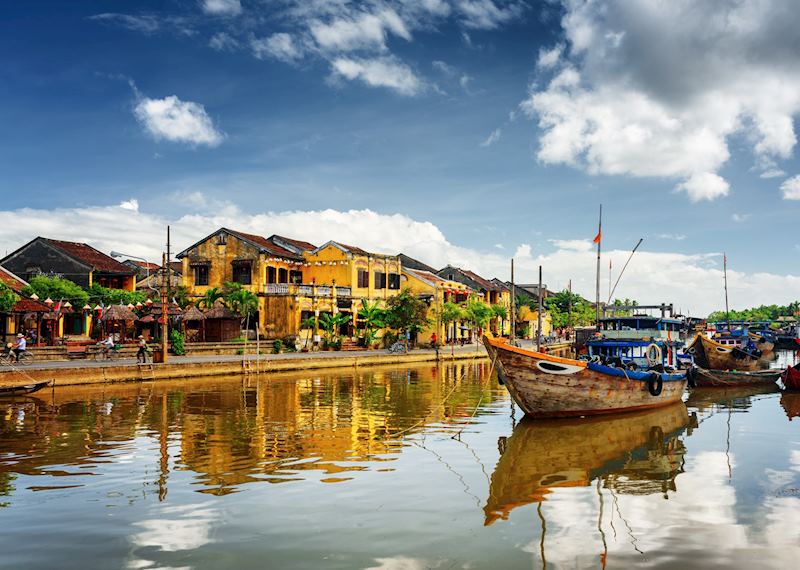
You can’t walk down a street in Hoi An without spotting a tailor’s shop, a legacy of this old trading port on Vietnam’s central coast. Influences from Hoi An’s days as a merchants’ city are still very evident in the Chinese and French architecture you’ll stroll past as you explore.
The fabrics used by the tailors are as good as you’ll find anywhere, but suits and dresses are made for a very reasonable price. Turnaround is quick: your first fitting within 24 hours and a finished garment a day later. The old areas in Hoi An are compact and pedestrianized, and most of the hotels will supply bikes for getting around. Cycle down any of the alleyways that lead off the main thoroughfares and you could end up by the river, at a market, or in a cafe or restaurant that’s hidden away. I can also arrange for you to take a guided cycling tour to the surrounding countryside, where you’ll get a glimpse into local handicrafts like mat weaving and coracle boat building.
7. Evening food tour by rickshaw, Hue
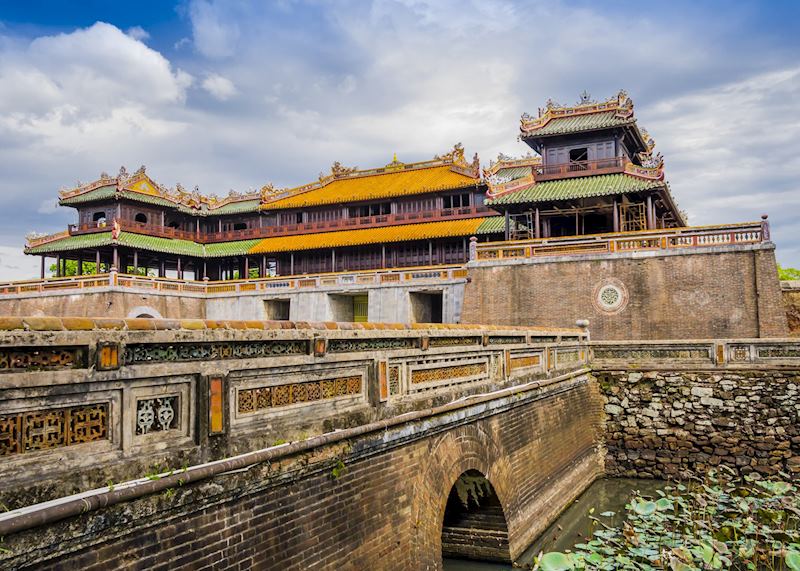
Gliding along the tree-lined streets of Hue in your own personal rickshaw, you’ll stop at bars, restaurants, and street-food stalls chosen by your guide for their authenticity.
You might sample Huda Beer (a brew made with water from the city’s Perfume River), bahn khoai (a crispy turmeric-infused pancake dish topped with seafood or pork belly), and che Hue (a sweet soup-like dessert that has over 100 colorful varieties). The city is considered to be Vietnam’s center of Buddhism, so I recommend trying traditional vegetarian cuisine, too, like tangy fermented tofu, which tastes a bit like cheese.
Your guide will also take you into the historic citadel, where you can stroll along its narrow lanes, pausing to take in the palaces, ponds, and temples that are found within its walls. I love it at this time of the day, when the monuments are lit up and shine against the night sky.
8. Relaxing on the beaches of Phu Quoc Island
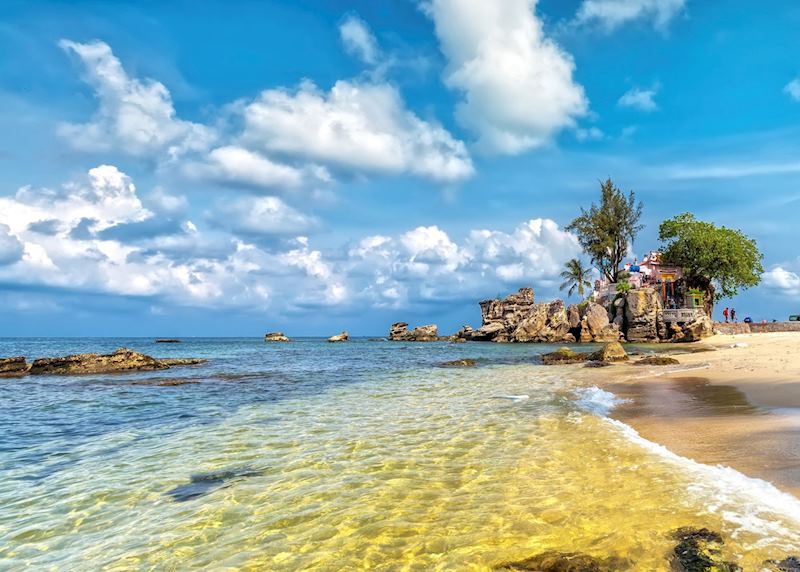
Located off the south coast of Vietnam, and actually closer to Cambodia, Phu Quoc is an island known for its white-sand beaches and laid-back atmosphere.
You don’t need to venture too far into the pristine waters before you can look down and see small fish weaving and darting around your feet.
Phu Quoc is also a working island. The fishermen haul in their catch in the early morning and the local food speciality is barbecued seafood cooked on the beach.
Start planning your trip to Vietnam
Start thinking about your experience. These itineraries are simply suggestions for how you could enjoy some of the same experiences as our specialists. They're just for inspiration, because your trip will be created around your particular tastes.
View All Tours in Vietnam